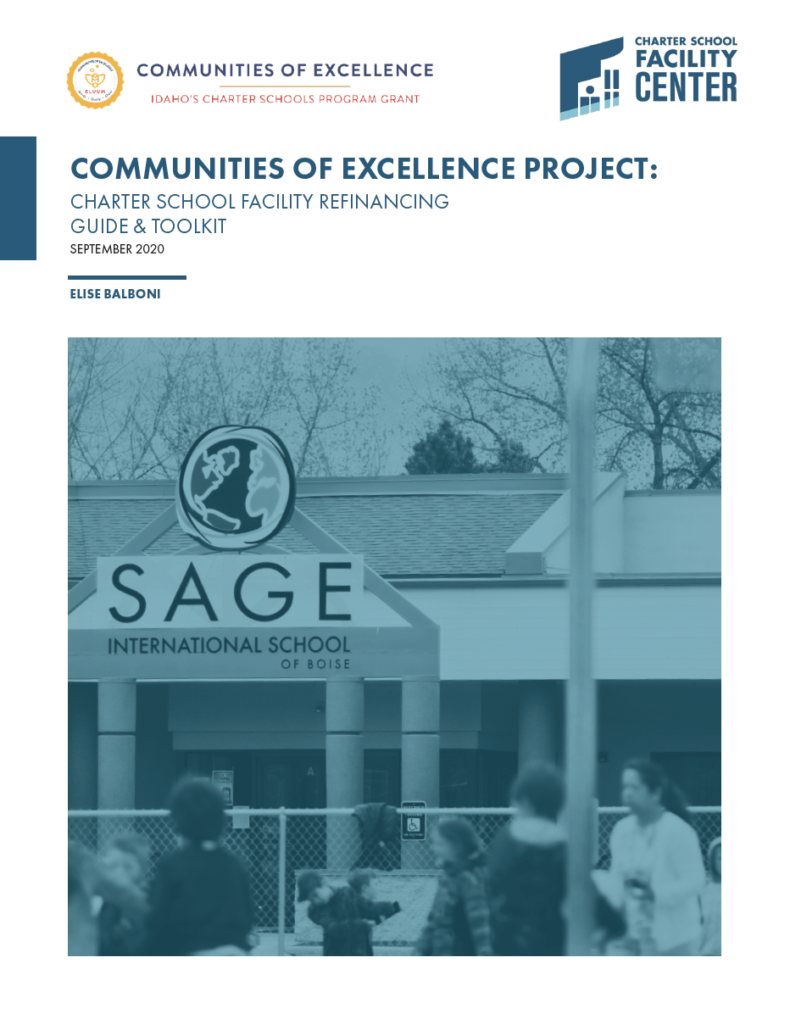WATCH
READ
How To Refinance Your Charter School Facility
by Elise Balboni
Refinancing charter school facilities debt is characterized by many of the same challenges facing charter school operators in initially securing financing for their facilities, including lack of taxing authority, limited public capital funds to pay for facilities, and inequities in operating funding. Moreover, charter schools are educational institutions, often lacking real estate development and finance capacity. Yet, unlike traditional public schools, charter schools are tasked with developing and financing their facilities from these discounted public funding sources. These challenges comprise the facilities burden for charter schools. This guide, and the toolkit below, are designed to help you save money by refinancing your school building.
TRY THE TOOLKIT
Use This Toolkit to Run Your Numbers
This toolkit will help you gather and organize all the information you need to help you spend more money in the classroom, not on the classroom. It covers everything from assembling your team, a due diligence checklist, detailed pro formas, a cash flow projection, and more!
Still have questions? Contact the facilitycenter@publiccharters.org or info@bluum.org. You can also join the LinkedIn group!
100% ($115,000.00) of this project was funded by Federal CSP Grant dollars; 0% ($0.00) of this report/event is funded by non-governmental sources; total cost $115,000.00.


